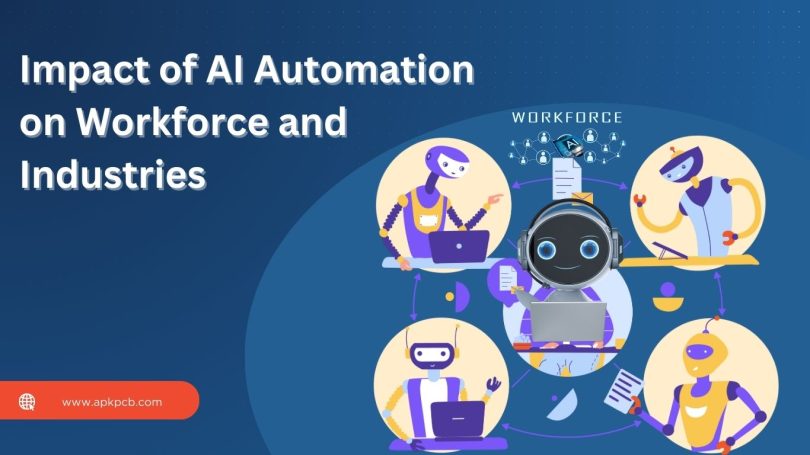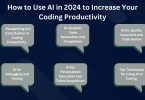Artificial intelligence, previously confined to science fiction, has become a global industry, creating a new era of automated procedures. It has completely changed how jobs are completed, from manufacturing to chatbots for customer care. Personalized recommendations suited to specific customers are now possible thanks to major advancements in marketing technology. Notwithstanding the enormous potential of this technology, its broad applications have both beneficial and detrimental effects, with some businesses likely to profit and others facing difficulties.
The prospect of massive job loss is one of the prevalent fears regarding automation. Although it is possible that certain tasks will be automated, it is also a given that a large number of new positions will be created to manage these forefront procedures. In addition, jobs that demand a human element, such as those in the arts, writing, education, maintenance and retail, are not susceptible to automation.
Impact and Challenges of Automation across Industries:
Yet, AI has a significant impact on a wide range of industries, including healthcare, safety, and manufacturing techniques, in addition to employment availability.
As a result, there is a complicated interaction between benefits and drawbacks when automation is integrated.
Pros or Positive Impacts:
Looking at certain industries, the following ones stand to gain from automation…
Marketing:
Automation fuels marketing efficiency and effectiveness. Streamlining processes enhances marketing strategies. Despite this automation, human input remains indispensable in the field of marketing. Marketers are required to strike a balance between utilizing AI and leveraging emotional intelligence to create impactful campaigns.
Ideally, the adoption of automation results in more opportunities than job reductions brought on by the installation of new machinery. Automation and AI integration is about to change a lot of industries and reign in a time when technology progress and human creativity will live side by side.
Streamlining Marketing Content:
Artificial intelligence (AI) is a unique tool that can analyze large datasets and provide insightful information across a wide range of fields. With the use of ingenious tools, which can sort through data on client behaviors and demographics, very accurate customer profiles can be created. This technological breakthrough means that infinite marketing insights can be obtained with little work. With AI enabling more efficient data analysis, marketers can now concentrate on creating excellent content that appeals to their target audience.
Agriculture:
The future of agriculture lies in smart farming, made possible through AI. By monitoring crucial factors such as soil moisture levels in real time, AI enables instant responses. Through automation via Internet of Things (IoT) devices and robotics, labor-intensive tasks are reduced significantly, leading to increased food production and quality. This progress not only saves time but also boosts efficiency, ensuring a plentiful food supply globally.
Supply Chain:
Fleet management improves productivity and safety by using IoT and advanced data analytics to make it more precise. While AI-driven analysis continuously improves routes and freight loading procedures, vehicles with driver behavior monitoring systems help to increase road safety. Thus, these developments benefit society and the environment by resulting in safer roads and better air quality.
Cons or Negative Impacts:
But it’s important to recognize that automation is not without its difficulties. Automated procedures may cause disruptions in some industries, especially those that employ low-income labor. For example, mechanized food production may result in the loss of a sizable number of low-paid jobs, illustrating the uneven effects of automation on various socioeconomic groups.
It is difficult to estimate the number of people who can change careers or pick up new skills. It is challenging to assess the possible financial challenges that impacted people and families may experience. Even though automation appears to offer time savings; 54 percent of workers think they can save 240 hours a year, these benefits sometimes come at the cost of workforce downsizing.
Manufacturing:
The manufacturing sector has experienced substantial job losses, with over five million jobs disappearing in the United States and Canada. A significant 85% of these losses can be attributed to automation. While robotics and AI have accelerated production processes, they have also led to job displacement. While increased output is a positive outcome, the reduction in job prospects and its impact on local economies cannot be ignored. Implementing transformative education and training programs that guide workers toward new sectors of the economy could potentially mitigate these losses. However, it requires a concerted effort to prepare the workforce for these impending changes.
Food Service:
Ranked as the second most likely industry to be automated, food service is on the verge of significant transformation. This sector, akin to manufacturing, faces the potential displacement of low-wage workers due to automation. Restaurants have been actively exploring various types of robotics, indicating a future where large-scale automation is inevitable, particularly in fast-food establishments. Although there will be cost savings from this change, food service positions will be drastically altered and regulatory functions will start to appear alongside automated devices. As a result, this adjustment may also result in higher pay throughout the sector.
Trucking:
The advent of fully autonomous vehicles is imminent; the trucking industry is poised to adopt them due to reduced costs and liability. A complete transition to autonomous trucking could result in the loss of 2 – 4.4 million jobs across the United States and Europe.
Simultaneously, the trucking industry is grappling with massive labor shortages, causing shipping issues and driving up prices for consumers. Automation presents a solution, offering cost savings and transforming the roles of drivers into regulatory functions, ensuring the proper functioning of autonomous trucks. This shift not only addresses labor shortages but also reshapes the trucking industry, albeit at the cost of traditional employment opportunities.
Summary:
In summary, AI automation is unquestionably having a revolutionary effect on our labor force and industries, bringing in an entirely new phase of productivity and creativity. There are still obstacles like job displacement, but there are plenty of chances for development, innovation and advancement. To ensure a smooth transition into the future of work, it is crucial that we give education and assistance to individuals impacted by this technological change top priority as we navigate it. We can fully utilize AI automation by embracing these changes with compassion and agility. This will enable human knowledge and AI Automation to coexist peacefully in tomorrow’s businesses.








